
Skåne County, sometimes referred to as Scania County in English, is the southernmost county, or län, of Sweden, basically corresponding to the traditional province of Scania. It borders the counties of Halland, Kronoberg and Blekinge and connects to Capital Region, Denmark by the Öresund Bridge across the Øresund strait. The seat of residence for the Skåne Governor is the city of Malmö. The headquarters of Skåne Regional Council are located in both Kristianstad and Malmö.

The provinces of Sweden are historical, geographical and cultural regions. Sweden has 25 provinces; they have no administrative function but remain historical legacies and a means of cultural identification pertaining to dialects and folklore.

Akvavit or aquavit is a distilled spirit that is principally produced in Scandinavia, where it has been produced since the 15th century. Akvavit is distilled from grain or potatoes, and is flavoured with a variety of herbs. It is also popular in Northern Germany.

Skåneland or Skånelandene (Danish) is a region on the southern Scandinavian peninsula. It includes the Swedish provinces of Blekinge, Halland, and Scania. The Danish island of Bornholm is traditionally also included. Skåneland has no official recognition or function and the term is not in common usage. Equivalent terms in English and Latin are "the Scanian Provinces" and "Terrae Scaniae" respectively. The term is mostly used in historical contexts and not in daily speech. In Danish, Skånelandene is used more often. The terms have no political implications as the region is not a political entity but a cultural region, without officially established administrative borders.
The history of the province of Scania was for many hundred years, up until the 18th century, marked by the struggle between the two Scandinavian kingdoms of Denmark and Sweden over the hegemony in the Baltic area.
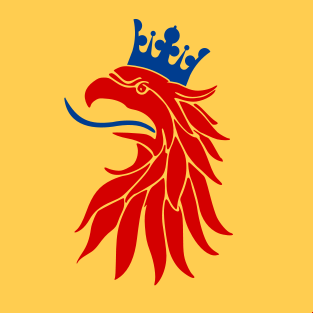
Flag of Scania refers to two different flags, of which one is a banner of the provincial coat of arms featuring a griffin head, and the other is a flag with a Scandinavian cross, the Scanian Cross Flag. They both are used as a provincial flag representing Scania, the southernmost province of Sweden.
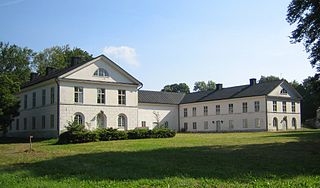
Herrevad Abbey was a Cistercian monastery near Ljungbyhed in Klippan Municipality, Scania, in the south of present-day Sweden, but formerly in Denmark until 1658. It is now a country house known as Herrevad Castle.
Southern Military District, originally I Military District was a Swedish military district, a command of the Swedish Armed Forces that had operational control over Southern Sweden, for most time of its existence corresponding to the area covered by the counties of Malmöhus, Kristianstad, Blekinge, Kronoberg, Jönköping and Kalmar. The headquarters of Milo S were located in Kristianstad.

Carl Edvard Persson was a celebrated Swedish actor, director and singer. During his time, he was well-known in the entire country, but through many of his films and songs, he is often associated with his home province, Scania. He was also a popular entertainer in Denmark and after an American 1947 inviting, he made a 100 day tour in the US "Swedish communities" and made 36 concerts in New York City and in 35 other American cities.
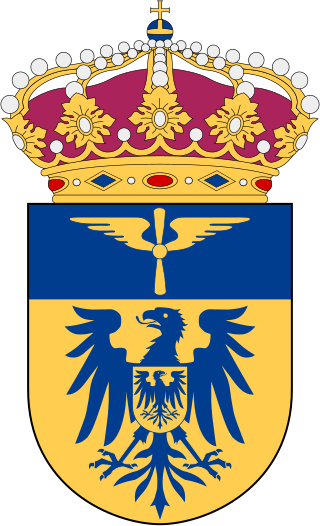
Swedish Air Force Flying School, also F 5 Ljungbyhed, or simply F 5, is a former Swedish Air Force training wing with the main base located in Ljungbyhed in southern Sweden.

Scania, also known by its native name of Skåne, is the southernmost of the historical provinces of Sweden. Located in the south tip of the geographical region of Götaland, the province is roughly conterminous with Skåne County, created in 1997. Like the other former provinces of Sweden, Scania still features in colloquial speech and in cultural references, and can therefore not be regarded as an archaic concept. Within Scania there are 33 municipalities that are autonomous within the Skåne Regional Council. Scania's largest city, Malmö, is the third-largest city in Sweden, as well as the fifth-largest in Scandinavia.
Skåne or Skane can refer to:

Enoch Leonard Thulin, is primarily remembered as a pioneer of the Swedish aircraft industry. He was an engineer who also worked on cars, lorries and internal combustion engines.

Skånes Djurpark is a Swedish zoological park located in Höör Municipality, Skåne County. It specializes in animals of the Nordic fauna, although orphaned animals from elsewhere in the world are sometimes temporarily housed there until a new home can be found for them. The zoo has about 900 animals, representing almost 100 species. These animals are most often kept in large enclosures with natural environments. Some of the domestic animals displayed include: Skånegås, Gute sheep, Fjäll cattle, and Jämtlandsget.
Carl P. Herslow is a Swedish politician and leader of the Scania Party. He is supporter of the separation of Scania from Sweden and the creation of an independent republic.
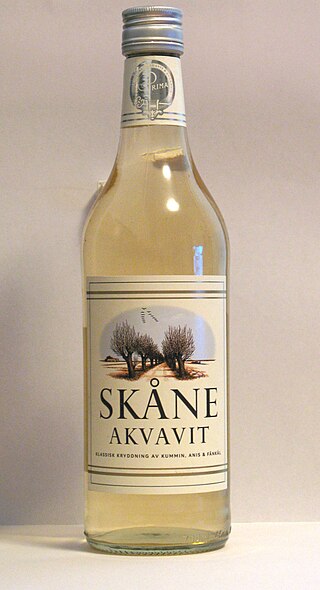
Skåne Akvavit is a Swedish spiced spirit brand of the akvavit type. It is named for the province of Scania, which is called Skåne in Swedish.

O.P. Anderson Aquavit is a Swedish spirit of the akvavit type, presented in 1891 for the Gothenburg Exhibition Fair under the name "Gammal Fin 1ma Aquavit". The firm producing it was called O.P. Anderson & Son i Göteborg, which has later given name to this brand of akvavit. Göteborg is the Swedish name for Gothenburg.
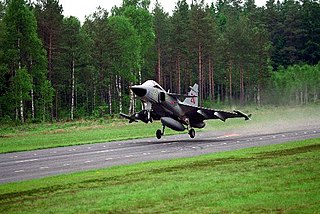
Bas 90 was an air base system used by the Swedish Air Force during the Cold War. Bas 90 was developed during the 1970s and 1980s from the existing Bas 60 system in response to the new threats and needs that had arisen since the conception of the Bas 60 system during the 1950s. Like its predecessor, the Bas 90 system was based around defensive force dispersal of aircraft across many krigsflygbaser in case of war, as well as dispersion of the air base functions within the individual bases themselves. The air units would have been dispersed so one squadron would be stationed per krigsflygbas. The system was a protective measure against nuclear weapons and airstrikes, the purpose being to make it complicated for an opponent to destroy the Swedish Air Force on the ground and thus ensure endurance for the air force in a conflict scenario.
The Defence Act of 1936 was a defence act passed by the Swedish Riksdag on 11 June 1936 which remained in effect until 17 June 1942.
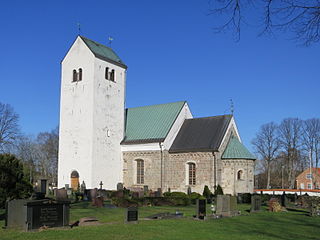
Vä Church, sometimes also called Saint Mary's Church in Vä is a well-preserved Romanesque church in Vä, in the southern Swedish province of Scania. It belongs to the Church of Sweden and is a listed building. It was built in the early 12th century, at a time when Scania was part of Denmark. The building was commissioned by a member of the Danish royal family, probably Queen Margaret Fredkulla. The church originally consisted of a nave, a chancel with an apse and two western towers. Quite soon after being finished, it was donated to Premonstratensian monks who used it as the church of their monastery until 1213. It simultaneously functioned as the parish church of Vä. At the end of the Middle Ages, a third tower was built, and in 1593 the building was enlarged. At the beginning of the 19th century, the western towers were demolished. A major restoration was carried out in the 1960s.















